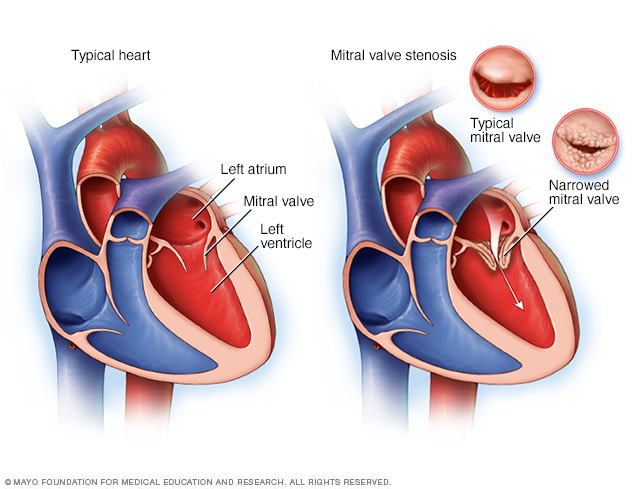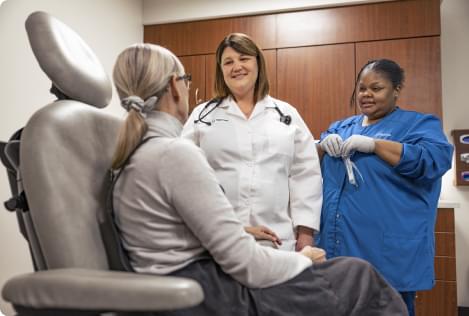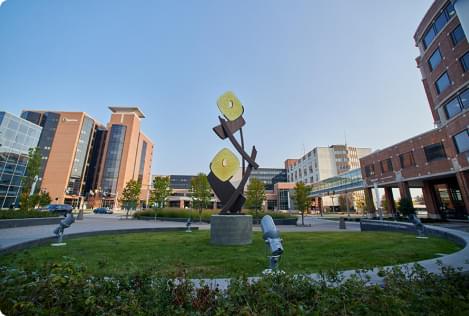Overview
Congenital mitral valve anomalies are problems with the valve between the heart's two left chambers. That valve is called the mitral valve. Congenital means it is present at birth.
Mitral valve anomalies include:
- Thick or stiff valve flaps, also called leaflets.
- Deformed leaflets or leaflets that join together. Your provider may say they are fused.
- Problems with the cords that support the valve. They might include missing cords, short and thick cords, or cords attaching to the heart muscle near the mitral valve.
- Heart tissue or heart muscle problems near the mitral valve.
- More than one opening in the area of the mitral valve. This is called a double-orifice valve.
Types of heart valve disease caused by mitral valve anomalies include:
- Narrowing of the mitral valve, also called mitral valve stenosis. The valve flaps are stiff and the valve opening may be narrowed. This condition reduces blood flow from the left atrium to the left ventricle.
- Leaky mitral valve, also called mitral valve regurgitation. The valve flaps don't close tightly. Sometimes they push backward into the left upper heart chamber as the heart squeezes. As a result, the mitral valve leaks blood.
You can have both mitral valve stenosis and mitral valve regurgitation.
People with mitral valve anomalies also often have other heart problems present at birth.

Diagnosis
The health care provider does a physical exam and asks questions about your symptoms and your medical and family history. The provider listens to the heart with a stethoscope. A heart murmur may be heard. A heart murmur is a symptom of mitral valve disease.
An echocardiogram is the main test used to diagnose congenital mitral valve anomalies. In an echocardiogram, sound waves create video images of the beating heart. An echocardiogram can show the structure of the heart and heart valves and blood flow through the heart.
There are two types of echocardiograms. During a standard echocardiogram, the health care provider presses a device called a transducer firmly against the skin. Sound waves from the device go through the chest to the heart. The device records the sound wave echoes from the heart. A computer changes them into moving images. This test is also called a transthoracic ultrasound.
Sometimes a standard echocardiogram doesn't give enough information. Your provider may recommend another test called a transesophageal echocardiogram. During this test, a flexible probe containing the transducer passes down the throat and into the tube connecting the mouth to the stomach (esophagus).
Other tests, such as a chest X-ray or electrocardiogram (ECG or EKG), also may be done.
Treatment
Treatment depends on the symptoms and how severe the condition is. If you have congenital mitral valve anomalies, you should have regular health checkups.
Some people may eventually need surgery to repair or replace the mitral valve.
Mitral valve repair
Mitral valve repair is done when possible, as it saves the heart valve. Surgeons may do one or more of the following during mitral valve repair:
- Patch holes in a valve.
- Reconnect valve flaps.
- Separate valve flaps that have fused.
- Separate, remove or reshape muscle near the valve.
- Separate, shorten, lengthen or replace the cords that support the valve.
- Remove excess valve tissue so that the leaflets can close tightly.
- Tighten or reinforce the ring around a valve (annulus) using an artificial ring.
Mitral valve replacement
If the mitral valve can't be repaired, the valve may need to be replaced. In mitral valve replacement, a surgeon removes the damaged valve. It's replaced with a mechanical valve or a valve made from cow, pig or human heart tissue. The tissue valve is also called a biological tissue valve.
Biological tissue valves wear down over time. They eventually need to be replaced. If you have a mechanical valve, you need blood thinners for life to prevent blood clots. Talk to your health care provider about the benefits and risks of each type of valve. The specific valve used is chosen by the cardiologist, surgeon and family after evaluating the risks and benefits.
Sometime people need another valve repair or surgery to replace a valve that no longer works.
Follow-up care
People born with congenital mitral valve anomalies need lifelong health checkups. It's best to be cared for by a provider trained in congenital heart conditions. These types of providers are called pediatric and adult congenital cardiologists.
© 1998-2024 Mayo Foundation for Medical Education and Research (MFMER). All rights reserved. Terms of Use


